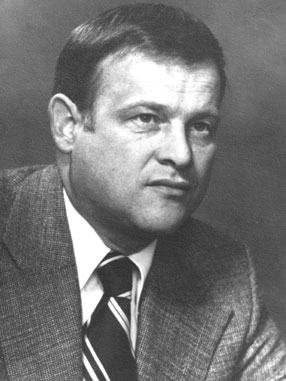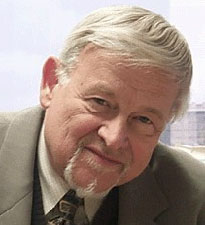 Jim Davis, circa 1977
Jim Davis, circa 1977
The California Geological Survey remembers former California State Geologist, James F. Davis, who passed away on September 30, 2023 in Madison, Wisconsin. Jim was 91 years old. He is survived by his wife of 66 years, Sally Ann, two children, and four grandchildren.
Early Life and Career, 1931–1977
Jim was born in Iowa and attended grade schools in the Washington, D. C. and Virginia areas. In 1953 he obtained a Bachelor of Science degree in geology from the University of Virginia, followed by Master of Science (1956) and Doctoral (1965) degrees in geology from the University of Wisconsin.
In 1961, Jim joined the New York Geological Survey as head of the Mineral Resources Program. He was then promoted to State Geologist and Chief Scientist of the Survey and held that position from 1968 to 1978. During this time, Jim directed major projects in seismology, regional geology and geophysics, mineral commodities, and environmental and economic geology. Jim was also a co-founder of the New York and northeastern United States seismic monitoring networks and consultant to the President’s Science Advisor on the design of national earthquake hazard mitigation programs.
California State Geologist, 1978–2003
On March 21, 1978, Jim became the 17th California State Geologist and Chief of the California Division of Mines and Geology (CDMG). During his 25-year tenure—the longest of any person in that position—many new Division programs became models for providing high-quality geological expertise to the public in the areas of economic resources, protection of the environment, and public safety. Davis undertook the implementation of changes to California’s Surface Mining and Reclamation Act by overseeing a means of classifying mineral resources in areas of competing land uses, and in the establishment of mined-land reclamation standards.
 Jim as California State Geologist, 2003
Jim as California State Geologist, 2003
In his capacity as State Geologist, he also supervised the seismic hazard activities of the CDMG, which included the requirements of the Strong Motion Instrumentation Act, the Alquist-Priolo Fault Zone Act, the Seismic Hazards Mapping Act, and the review of geological and seismic design parameters for public schools, hospitals, and other critical facilities. As Chair of the Earthquake Hazards Committee of the Governor’s Task Force on Earthquake Preparedness, Davis introduced the concept of the Division’s earthquake planning scenarios portraying potential damage to lifelines and other critical facilities associated with earthquakes in California’s urban areas.
Following his retirement on June 30, 2003, Davis continued his involvement with several professional organizations including the American Geophysical Union, the Geological Society of America, the American Geological Institute, and the Consortium of Organizations for Strong Motion Observation Systems. He also served on the National Earthquake Prediction Evaluation Council, and the Geological Hazards Committee of the Association of American State Geologists. In recognition of his 50 years of public service, the Association awarded Jim the Ian Campbell Medal in 2014.
After his retirement, when asked about the highlights of his tenure as State Geologist, Davis said, “We have an excellent staff, dedicated and capable of significant contributions toward understanding the geology of the state and using that understanding for public benefit. Additionally, I feel that California has been in the lead in many important areas. The Alquist-Priolo Earthquake Fault Program, the Seismic Hazards Mapping Program and the Strong Motion Instrumentation Program are pioneer programs. The latter two were established with special funds, developed from building permit fees, which was an innovative idea.”
Davis believed the key to his success was to keep an open-minded approach to change and a willingness to keep learning.
“Among the many things I’ve learned over the course of my career," he said, "is that it’s important to have an ethical and intellectual interest and compulsion to see that science is wisely applied in public policy.”
 Jim in 2003
Jim in 2003
